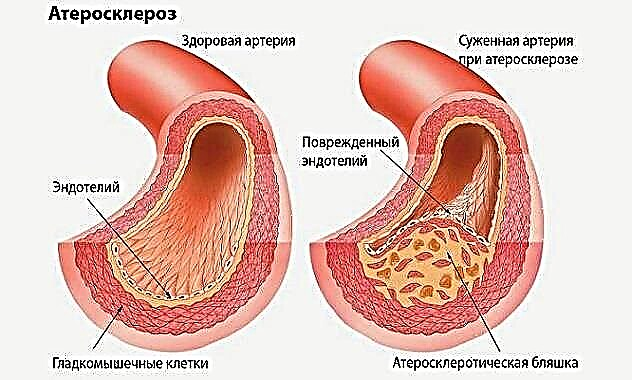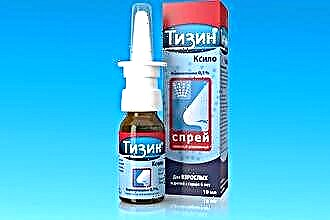The constant moisture of the nasal mucosa is provided by unicellular glands of external secretion, which are called goblet exocrinocytes. A decrease in the activity of mucus-producing cells leads to drying out of the ciliated epithelium. Due to this, the filtration and drainage functions of the mucous membrane are disrupted, which can subsequently lead to the development of respiratory disease. How to get rid of dry nose?
 It is possible to restore the activity of goblet cells by intensively moisturizing the mucous membrane and eliminating inflammatory processes in the nasopharynx. To achieve the desired effect, it is recommended to systematically carry out sanitizing procedures and use drugs that have a wound-healing effect.
It is possible to restore the activity of goblet cells by intensively moisturizing the mucous membrane and eliminating inflammatory processes in the nasopharynx. To achieve the desired effect, it is recommended to systematically carry out sanitizing procedures and use drugs that have a wound-healing effect.
The article will discuss the most effective and safe ways to eliminate dryness in the nasopharynx and normalize mucociliary clearance.
Treatment methods
Treatment of dry nasal mucosa should begin with identifying and eliminating the causes of dryness of the nasopharynx. Dysfunction of the submucosal layer can be associated with inflammation of the respiratory tract, allergic reactions, inhalation of dry air, or abuse of vasoconstrictors. Symptomatic treatment, aimed only at eliminating discomfort in the nose, can lead to sad consequences, in particular atrophic rhinitis, nasopharyngeal abscess, sinusitis, etc.
Within the framework of traditional medicine, the following are used to treat a dry nasopharynx:
- inhalations - the introduction of medicinal and moisturizing agents into the respiratory tract by means of steam, compressor and ultrasonic inhalers;
- sanitizing procedures - irrigation (irrigation) of the paranasal sinuses and nasal canals with moisturizers and preparations with antiseptic and wound-healing properties;
- local compresses - the introduction into the nasal passages of gauze and cotton turundas soaked in water and oil solutions.
Dehydration of the nasal mucosa is fraught with the formation of cracks in the soft tissues, nosebleeds and suppuration.
The above methods of treatment allow you to get rid of nasopharyngeal tickling and restore mucus secretion in the upper respiratory tract. Moisturizing the ciliated epithelium helps to normalize the acid-base balance and, as a result, to restore the activity of goblet exocrinocytes.
Sanitizing procedures
Sanitation of the nasopharynx is a physiotherapeutic procedure aimed at irrigating the mucous membrane with moisturizing solutions. During nasal irrigation, pathogens, allergens and dust particles are removed from the surface of the ciliated epithelium. As practice shows, periodic sanitizing procedures help to increase vascular tone and strengthen local immunity.
There are two ways to treat dry nose:
Instilling moisturizers
In medical practice, isotonic solutions are most often used to moisturize the respiratory tract. They do not disturb the pH level in the mucous membrane, do not cause irritation and side effects. They contain useful substances, in particular magnesium, calcium, copper, iron, zinc, which accelerate biochemical processes in tissues. As a consequence, this leads to the restoration of the secretory function of the goblet cells and the elimination of dryness in the nasal cavity.
 To eliminate discomfort in the nose and moisturize the mucous membrane, it is recommended to use:
To eliminate discomfort in the nose and moisturize the mucous membrane, it is recommended to use:
- Otrivin More;
- Humer;
- Dolphin;
- "No-Salt";
- Salin.
The use of moisturizing drops helps to restore the contractile function of the cilia, which are located in the ciliated epithelium. Due to this, mucociliary clearance and the process of cleansing the nasopharynx from pathogens and foreign agents are normalized.
Rinsing the nose
Rinsing of the nasopharynx with medicinal solutions can be carried out using special irrigators, a rubber bulb or neti sweat. According to experts, neti pots are the safest and most convenient devices for irrigating the nasal passages. To eliminate dryness in the nose and prevent complications, the procedure must be performed at least 2 times a day with the following drugs:
- "Quicks";
- "Aqualor";
- Morenazal;
- Aqua Maris Sens;
- Doctor Theiss.
Important! Medicines can only be diluted with saline or boiled water.
There are cases when people used "raw" water from the tap to wash their nose and this led to disastrous consequences. Non-disinfected water can contain bacteria and protozoa that can cause irreparable damage to health. According to statistics, 3 cases of death of people from meningitis caused by improper washing of the nasal cavity have been registered in the world.
Inhalation
Inhalation is the easiest and fastest way to moisturize the mucous membrane with aerosols and water vapor. Inhalation can be carried out to eliminate not only dryness, but also infections in the respiratory tract. The therapeutic effect depends on the type of drugs used and, of course, the frequency of the procedure.
There are two ways to moisturize the nasal passages and get rid of dryness in the nasopharynx:
Steam inhalation
The warm steam intensively moisturizes the nasal passages and sinuses, which prevents the formation of dry crusts inside the nasal cavity. Due to the relatively high temperature of the inhaled vapor, the blood vessels in the soft tissues dilate. Due to this, the trophism of the ciliated epithelium and goblet cells is improved, as a result of which their secretory function is restored.
Before treating dry nose with steam inhalation, it is advisable to familiarize yourself with the following recommendations for the procedure:
- boil water and pour it into a wide bowl;
- suck the water to 40 ° C and add 2-3 drops of mint or eucalyptus essential oil to it;
- bend over the bowl and cover your head with a waffle towel;
- breathe over the steam through your nose for 10 minutes.
Important! Using water with temperatures over 40 ° C is fraught with burns in the nasal mucosa.
Nebulizer inhalation
 The safest way to treat dry nose is with a compressor inhaler called a nebulizer. These devices convert liquid into aerosols at room temperature, which prevents burns on the mucosal surface. To moisturize the nasopharynx, it is recommended to pour alkaline mineral water, saline solution ("Sodium chloride"), "Rotokan", etc. into nebulizers.
The safest way to treat dry nose is with a compressor inhaler called a nebulizer. These devices convert liquid into aerosols at room temperature, which prevents burns on the mucosal surface. To moisturize the nasopharynx, it is recommended to pour alkaline mineral water, saline solution ("Sodium chloride"), "Rotokan", etc. into nebulizers.
When carrying out a medical procedure, the following rules must be observed:
- inhalation is performed an hour and a half after eating;
- the solution is inhaled either through a face mask or through a nasal cannula;
- during inhalation, you need to take slow and shallow breaths;
- the duration of the therapy session is set by the doctor and varies from 7 to 15 minutes;
- after inhalation, it is advisable not to go outside and not talk for 15-20 minutes.
To prevent evaporation of liquid from the inside of the nasal passages, it is recommended to lubricate the nostrils with olive oil. As prescribed by the attending physician, special ointments - "Pinosol" and "Nizita" can be used as moisturizing agents. They contain emollient components that prevent the formation of cracks and moisturize the ciliated epithelium.
Local compresses
What to do if dry crusts appear inside the nose? Very often, the formation of crusts on the inner surface of the nasal canals indicates the development of atrophic rhinitis. Secondary rhinitis in most cases occurs due to the irrational use of vasoconstrictor drugs. They contain atropine, which inhibits the activity of goblet cells. As a result, this leads to drying out of the mucous membrane and the formation of crusts on its surface.
Turundas are an easy and effective method of eliminating crusts and dryness in the nasal passages. They are tight gauze or cotton tubes that are inserted into the nasal passages. Previously, turundas are moistened in a liquid that softens the crusts and moisturizes the ciliated epithelium. Using gauze and cotton tourniquets is quite simple:
- twist a 7-8 cm long tampon from a piece of gauze or cotton;
- soak a swab with liquid or ointment;
- insert the turunda into the nose for 1-2 hours;
- repeat the procedure up to 3-4 times a day.
 Disinfectants can be used as a solution to soften the crusts. To speed up the healing process of the mucous membrane, it is recommended to use medicines based on colloidal silver. They disinfect the mucous membrane and accelerate its regeneration. The most suitable pharmacy products include "Argolife", "Collargol" and "Protargol".
Disinfectants can be used as a solution to soften the crusts. To speed up the healing process of the mucous membrane, it is recommended to use medicines based on colloidal silver. They disinfect the mucous membrane and accelerate its regeneration. The most suitable pharmacy products include "Argolife", "Collargol" and "Protargol".
After softening and removing the crusts, it is advisable to lubricate the nasal passages with neutral vegetable oils - peach, linseed, sesame, etc. They contain a large amount of emollient and nourishing components that will help restore the activity of unicellular glands in the ciliated epithelium.
Outcomes
Dry and sore nose is a consequence of dysfunction of the glands that produce mucus in the nasopharynx. Respiratory diseases, abuse of vasoconstrictor drugs, unfavorable ecology, etc. can provoke disturbances in the work of the submucosal layer. It is possible to replenish the lack of moisture in soft tissues by carrying out sanitizing procedures and instilling moisturizing preparations into the nose.
Against the background of drying out of the mucous membrane in the nose, hard crusts are often formed, which cause perspiration and eventually cause bleeding. To eliminate them, it is recommended to use cotton wool soaked in oily liquids and disinfectant solutions. In medical practice, to normalize the secretory function of the ciliated epithelium, they usually use "Marimer", "Collargol", "Quicks", "Morenazal", "Dolphin", Aqualor, etc.
Steam and nebulizer inhalation can help moisturize the paranasal sinuses. The use of alkaline solutions allows you to restore the acid-base balance and, as a result, moisturize the mucous membrane. To prevent recurrence of the problem, it is recommended to follow the drinking regimen and treat colds in time.



